VILLA'
Is that really a full stop after the 'N' of
'Kerrison' (probably damage to the surface)?
In 1856 Sir Edward Kerrison of
Brome Hall purchased Pool Farm for the purpose of establishing a
Reformatory. There were 235 subscribers towards the cost of the
purchase, but the main cost was borne by Sir Edward. Pool Farmhouse was
a very dilapidated building with a barn and other farm buildings with
11 acres 1 rood and 1 perch in Thorndon and approximately 5 acres in
Stoke Ash. It was owned by the Hammond family and had two tenants, Miss
Charlotte Hammond and Mr Berry who were kind enough to vacate the
premises.
Between 8th February and 13th March the necessary alterations were made and after inspection by the Prison Inspector of the district a certificate was granted by the Home Office for the 'Suffolk Reformatory'. On 1 1th February Mr and Mrs Robert Gill were elected by the committee as Master and Matron at a salary of £100 and £50 allowance for rations. On the 31st March the first boy, committed at Bury Sessions, was admitted. A Labour Master, at labourers wages, to assist in all outdoor employments, had been engaged. At Sir Edward's death in 1886, his widow, Lady Caroline Kerrison, desired to perpetuate his memory by naming the Suffolk Reformatory as Kerrison Reformatory and in June 1887 the Trust was formed.
Khartoum Villa, 30-32 Palmerston Road

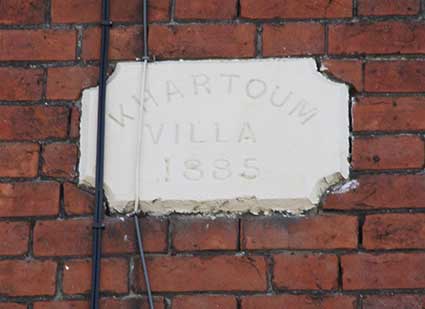 2021 images
2021 images
The enhanced image above right shows the house plaque with ubiquitous cables on the outside of the house:
General Gordon and Khartoum are mentioned elsewhere in Ipswich: Khartoum Road (see Street name dreivations) and Omdurman Cottages on our Baden-Powell Cottages page; also in relation to St Helen's Barracks.
Home Cottage, 24a Palmerston Road
Between 8th February and 13th March the necessary alterations were made and after inspection by the Prison Inspector of the district a certificate was granted by the Home Office for the 'Suffolk Reformatory'. On 1 1th February Mr and Mrs Robert Gill were elected by the committee as Master and Matron at a salary of £100 and £50 allowance for rations. On the 31st March the first boy, committed at Bury Sessions, was admitted. A Labour Master, at labourers wages, to assist in all outdoor employments, had been engaged. At Sir Edward's death in 1886, his widow, Lady Caroline Kerrison, desired to perpetuate his memory by naming the Suffolk Reformatory as Kerrison Reformatory and in June 1887 the Trust was formed.
Khartoum Villa, 30-32 Palmerston Road

 2021 images
2021 imagesThe enhanced image above right shows the house plaque with ubiquitous cables on the outside of the house:
‘KHARTOUM
VILLA
1885’
The Battle of Khartoum was the conquest of Egyptian-held
Khartoum (1884-5) by the Mahdist forces led by Muhammad Ahmad. Egypt
had held the city for some time, but the siege the Mahdists engineered
and carried out from 13 March 1884 to 26 January 1885 was enough to
wrest control away from the Egyptian administration. After a ten-month
siege, when the Mahdists finally broke into the city, the entire
garrison of Egyptian soldiers was killed along with 4,000 Sudanese
civilians. General Charles George Gordon, a popular figure in Great
Britain and former Governor-General of Sudan in 1876-79, was appointed
to quell the rebellion in 1884. Gordon favoured an aggressive policy in
Sudan but was killed in the fighting in 1885. This event clearly
resonated in Britain and was commemorated in the house name.VILLA
1885’
General Gordon and Khartoum are mentioned elsewhere in Ipswich: Khartoum Road (see Street name dreivations) and Omdurman Cottages on our Baden-Powell Cottages page; also in relation to St Helen's Barracks.
Home Cottage, 24a Palmerston Road
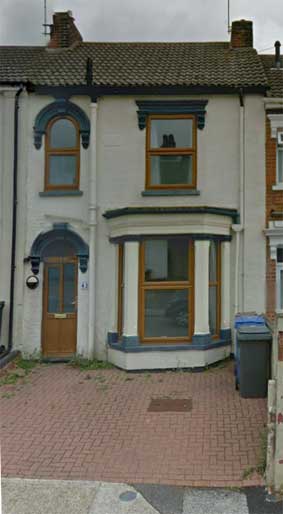
 2013 images
2013 images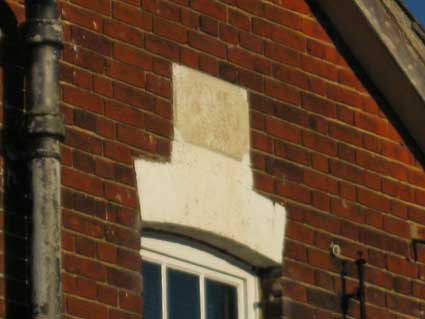
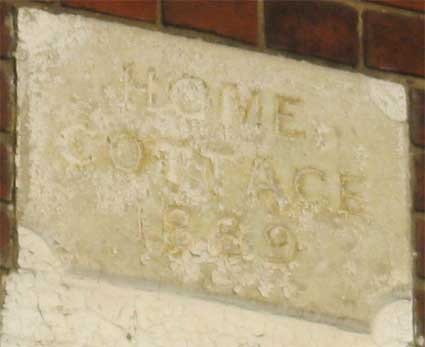
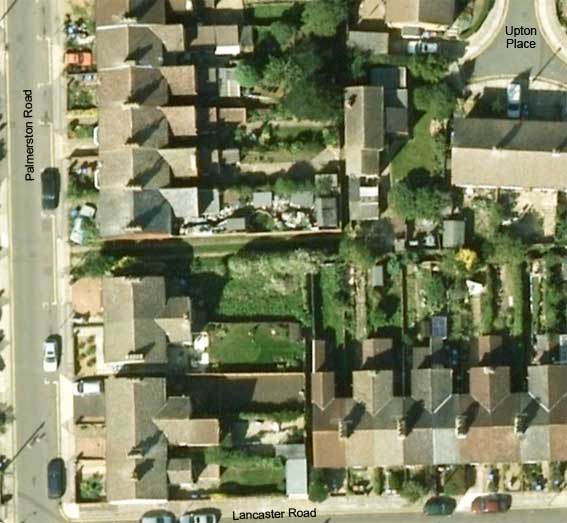 2007 aerial view
2007 aerial view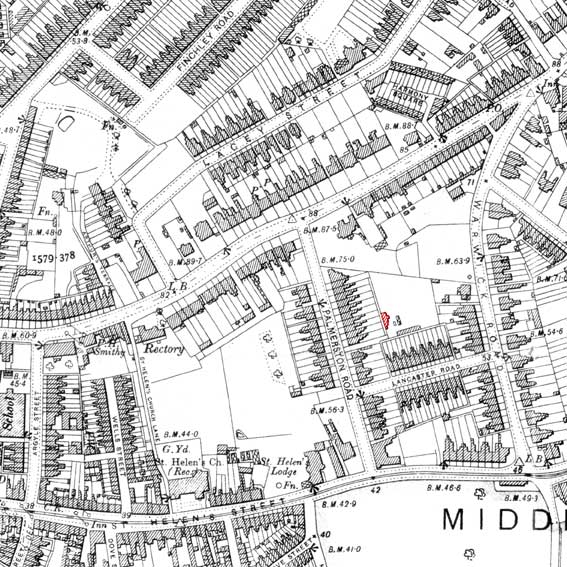 1902 map
1902 map